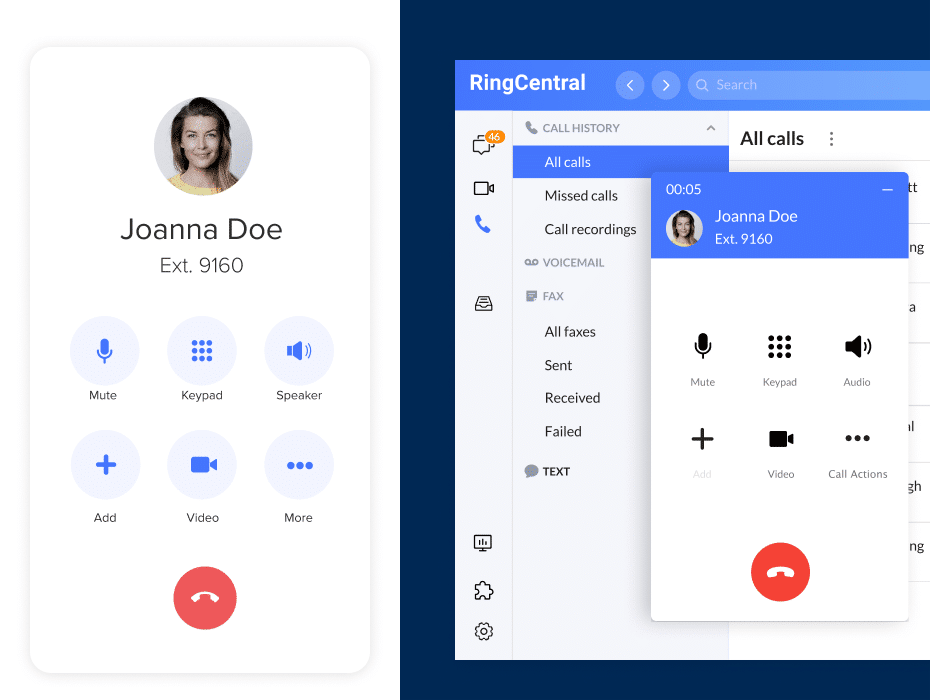Highlights:
- Businesses use robocalls for a variety of legitimate reasons, but bad actors have created a global aversion to picking up unknown numbers.
- STIR/SHAKEN, a spam call prevention framework, aims to authenticate calls and notify users before they answer the phone.
- Using STIR/SHAKEN and our analytics-based robocall detection, we inform your users with “Suspected Robocall” as the caller ID when a spam call is detected.
We’ve all been there: the phone rings, we don’t recognize the number, and we decide to take the call anyway only to find an unwanted, unwarranted, and noncompliant spam call. Unfortunately, the experience makes us not want to answer our phones anymore.
And you might wonder: in this day and age, how is this all still possible? Before we look into that, let’s talk about how robocalls happen.
What is robocalling?
A robocall is a call generated by an automatic dialer that uses pre-recorded messages. Many legitimate organizations use robocalls for a variety of different business reasons, particularly in political campaigns, appointment reminders, sales, or collections.
A number of laws have been created to protect us from unwanted spam calls including the Telephone Consumer Protection Act of 1991 (TCPA) and Federal Communications Commission (FCC). Further regulation was created in 2019 by the US Congress to limit the use of robocalls. Dubbed the TRACED Act, it requires the FCC to do several things:
- Implement Caller ID authentication
- Report all criminal robocalls to the Justice Department
- Make it possible for consumers to block robocalls at no charge
- Increase penalties for companies that violate the law
Many organizations work hard to abide by these regulations to stay legal and use this technology appropriately. However, there are also a lot of bad actors that use the technology nefariously.
The problems created by illegal robocalling
While regulations generally allow businesses to use robocalling for legitimate calls, we all know that’s not how they get used. Bad actors use special software to substitute their Caller ID with that of, say, the IRS or Apple Support—or even a number that closely resembles your own. This practice, commonly known as “spoofing,” increases the chance that someone will answer the call.
You might think, why not just ignore calls from IDs you don’t recognize? Well, in many instances, this can have serious repercussions.
For example, medical professionals have raised concerns about the impact of robocalling on reaching patients. For example, when patients get referred to specialists—who then try to call the patient—those calls could get ignored because the patient doesn’t recognize the number. When doctors can’t reach patients in a timely manner, potentially life-threatening issues could occur.
Can you trace robocalls?
Tracing calls is possible with the new STIR/SHAKEN framework. The STIR/SHAKEN authentication system uses a kind of digital fingerprint that can recognize both the number where the call originates and the number that appears on Caller ID. If they’re different, the recipient could get notified of this. As carriers have rolled this out, you may have noticed that you now receive calls that say “possible spam” in your Caller ID.

But analytics aren’t always perfect. Sometimes bad actors slip through (we call these “false negatives”) or a legitimate number gets misclassified as a robocall (a “false positive”). Strong analytics, however, can navigate this landscape effectively, relying on crowd-sourced data for inputs but not basing final decisions solely on that data.
Because any legitimate business should be able to make calls to solicit potential customers, it remains important that the crowd-sourced model of recording objections to such calls doesn’t become the only standard of classification. Best practice suggests that STIR/SHAKEN and call analytics should be used together for an optimal mitigation strategy. That’s where RingCentral comes in.
How does RingCentral stop robocalls?
Carriers in the US have come together to define a framework known as STIR/SHAKEN. This allows different carriers that send and receive calls to work together. For example, in a phone call, the carriers can vouch for the end-to-end authenticity of the Caller ID.
Not all actors manipulate their Caller IDs, however, but using the collective feedback of multiple called parties, they can develop a bad reputation as their bad intentions become clear. When this happens, their phone numbers typically get added to a blacklist.
RingCentral began offering call analytics based on such blacklists in late 2019. Since then, we’ve further evolved the capability. In addition to labeling incoming calls as “Suspected Robocall” to help you decide if you should answer or not, customers now have the option to block suspected robocalls completely.
RingCentral users who receive unsolicited phone calls get additional information with the call to help them decide whether to answer it or not. Incoming calls are labeled with “Suspected Robocall” if the caller ID is found to be present in a blacklist.
Originally published Jun 29, 2020, updated Jul 13, 2021






